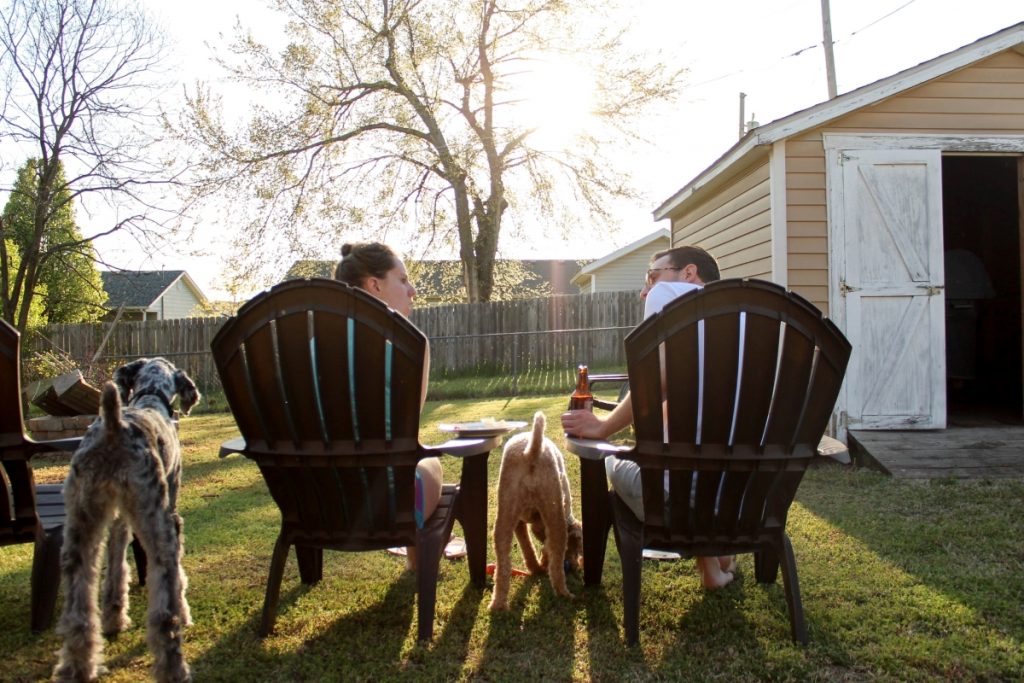
Of all the changes that have come about in the last several months due to the health crisis sweeping our globe, one good one has been that families have had more time to spend together.
Changes in routine and activities are always stressful for children, and all the regulations surrounding this pandemic are no different.
As families have been urged to continue social distancing, a new consequence of this practice has hit certain children particularly hard.
As our favorite activities have been cancelled and our favorite family spots closed due to restrictions, many families have coped with being cooped-up by spending more time outdoors.
Parks, battlefields, walking trails and, of course, our backyards have become our new favorite places to be.
The pandemic has shown just how much our well-being is negatively impacted by being forced to stay indoors.
Outdoor spaces provide a place for children to get some much-needed time out of the house, to exercise and explore — but many families don’t have the luxury of having natural spaces nearby.
Those in urban areas have been especially affected as playground equipment has been roped off, baseball fields and basketball courts emptied, and crowd sizes regulated in the name of social distancing.
In some ways, the need to get out of the house and into nature has helped kids to put down the smart devices and rediscover actual childhood play.
For others, the pandemic has compounded an already problematic situation. Parents are seeing their children lash-out, regress in behaviors, or become depressed, angry, and introverted.
Richard Louv is a journalist who has studied and written about the importance of green spaces and outdoor play and has actually coined a term that emphasizes the negative affects of a lack of outdoor activity in children — “Nature-Deficit Disorder.”
Studies have shown that adding green spaces outside of schools and within cities can lower the instances of depression, anxiety, and behavioral issues in both kids and adults.
Children living in the inner city are especially vulnerable to higher levels of stress, pollution, and the peer pressure of negative behaviors when they do not have access to outdoor green spaces.
And this has been especially evident to some city-dwelling families as their local playgrounds have been closed and small parks have become too overcrowded for comfort.
Green spaces encourage creativity and physical activity, and being surrounded by natural elements like trees, water, and wildlife offers a sense of calm to all of us.
Research has even shown that green spaces decrease aggression and boost the immune system, and many of the socio-economic factors in regard to behavior in children can be attributed to lack of green space.
For example, children in low-income inner-city areas may exhibit more negative behaviors, stress, and poorer performance in school simply because they don’t have access to the beauty of nature and its calming influences.
Wealthier neighborhoods are more likely to have larger yards, better parks, walking trails and sports fields, whereas lower income areas in cities have little to none of these sanity-saving amenities.
Richard Louv has some ideas for families whose children are craving a connection to nature, but for whom access to green spaces is limited.
He suggests setting up a space around a window in the home in which children can watch the world around them, be it birds flying by, the clouds in the sky, or stargazing at night.
Even an apartment balcony, rooftop, or fire escape (with adult supervision and safety-permitting, of course) can be decked out with a few plants, some cushions or chairs, and other comforting items to be used for “world-watching” as a family.
If you have a small backyard, Louv says that even a deck can be used to pitch a tent and go on a camping adventure with the kids.
Set up a telescope if you have one, or talk about the stars in the sky and research them after the night is over. Grab the binoculars and a few flashlights, along with some snacks, for a night the kids will always remember.
No matter how small your space, there’s an opportunity to bring nature in. Set up a small terrarium or aquarium, grow a container of vegetables on the balcony, hang a bird feeder, or buy a few plants that attract butterflies.
And if you do have a backyard of any size, plant a small garden and enlist the kids’ help with its care, give them a spot to dig and a jar to collect their treasures, catch and release some fireflies at night, or just sit together and tell stories and listen to the crickets.
Every family has different limitations and opportunities, but getting kids outdoors and in-touch with nature can be done in many different ways.
The important thing is to help them explore, relax, and connect with themselves and each other by finding some “green space time” — anytime and anywhere you can.
